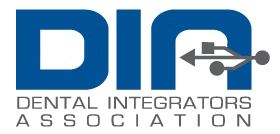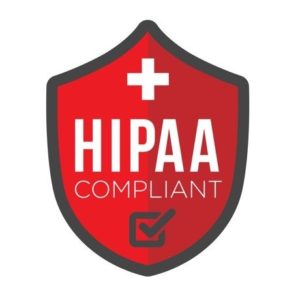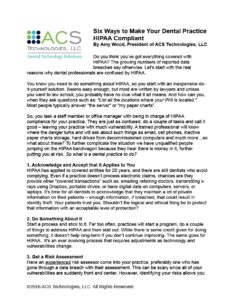There is Hope
“A Match Made in _____”
Cyber Threats and HIPAA Compliance – There is Hope
 By Patrick Jacobwith, Sunset Dental
By Patrick Jacobwith, Sunset Dental
President, DIA
Guest Writer for Sally McKenzie
Are we at the beginning, middle or end? Please let it be the end. Recent events have caused many in the business community to think these thoughts, especially in healthcare.
Cyber Crime has exploded. The global cost of cybercrime will reach $2 trillion by 2019, a threefold increase from the 2015 estimate of $500 billion. Last year, IDG detected 38 percent more cybersecurity incidents than the year prior. Source – SecurityIntelligence by IBM
HIPAA enforcement is real. Due to the intensity of compliance and regulations, the costs per breach to organizations in the health care and financial services sectors top all other industry groups, according to the Ponemon study.
Small Business Beware! Small and midsized organizations (SMBs), defined as those with less than 1,000 employees, are hardly immune to cybercrime — actually quite to the contrary. According to Keeper Security’s “The State of SMB Cybersecurity” report, a staggering 50 percent of small and midsized organizations reported suffering at least one cyberattack in the last 12 months.
A Cyber Attack may be considered a HIPAA breach according to the OCR’s Wall of Shame and as outlined in the following headline from HealthITSecurity.
“Cybersecurity Attacks Leading 2016 Data Breach Cause
The top 10 healthcare data breaches of 2016 were mainly caused by cybersecurity attacks, including ransomware and unauthorized access.”
So the marriage has been made. Cyber-attacks are directly linked to HIPAA breaches. This presents a real and present risk to all dental practices. As we know, a breach can occur at any time and many dental practices are still open doors for cyber criminals.
We are not at an end, we are more near the beginning. Cyber criminals are well-funded and becoming increasingly organized.
Ransomware – the latest wave
What is ransomware? Ransomware is a virus designed to block access to the data in a system until money is paid. Ransomware usually is planted in a clinic’s network environment via an attachment to an email. The virus immediately does three things:
1. Begins encrypting data on the computers
2. Sends the decryption key to their own “secret” location
3. Grabs all contacts and forwards the nasty email (then it looks like a “friendly email”)
There is Hope
What can we do? In the IT Managed Services arena, the Dental Integrators Association (DIA) recent national conference discussed this topic at length with guests from the FBI Cybersecurity Division. DIA member companies are well aware of the threats and have been working diligently to create solutions. The best thing you can do, is work with a managed IT provider who will secure your systems before you have a breach.
In closing below are a few simple short-term tips for each of you. Beyond the short term, please build a plan for the long term.
Simple and Practical suggestions for all dental practices:
‘ ‘ ‘ ‘ ‘
• Partner with a credible IT/Cyber Security company. The DIA and its member companies take these matters seriously.
• Make Cybercrime and HIPAA a higher priority and invest resources in solutions
• Cyber Tips
‘ ‘ ‘ ‘ ‘
o Allow the partners to deploy a credible firewall
o Allow the partners to deploy a credible back-up solution that includes Business Continuity
o Do not open email attachments! Make sure the attachment is clean. Clean can be because the email was sent via encryption, or just call the sender and verify they actually sent the email.
‘ ‘ ‘ ‘ ‘
• HIPAA
‘ ‘ ‘ ‘ ‘
o Build a comprehensive plan to address HIPAA in your organization
o Begin with a HIPAA risk assessment
o Train your staff
o Get Business Associate agreements in place
o Go back to your comprehensive plan
Most importantly, please work with a professional IT company. The Dental Integrators Association is an organization dedicated to educating IT professionals. To be sure you have cutting edge knowledge on your side you can find a professional at the Dental Integrators Association website www.dentalintegrators.org
 Patrick Jacobwith is the CEO of Sunset Dental Technologies a multi-state organization based in Minnesota. Patrick is also the President of the Dental Integrators Association. He believes in excellent service and building healthy and productive relationships. Patrick’s core values are built on three words: Service, Humility and Love.
Patrick Jacobwith is the CEO of Sunset Dental Technologies a multi-state organization based in Minnesota. Patrick is also the President of the Dental Integrators Association. He believes in excellent service and building healthy and productive relationships. Patrick’s core values are built on three words: Service, Humility and Love.
Patrick can be reached at patrick@sunsetdt.com











